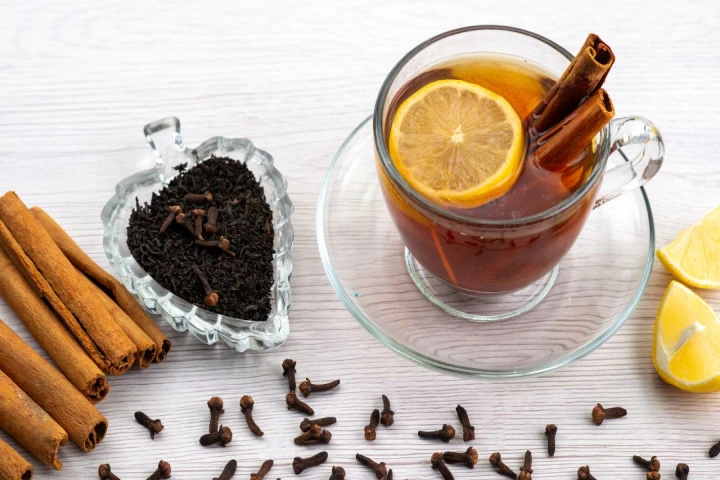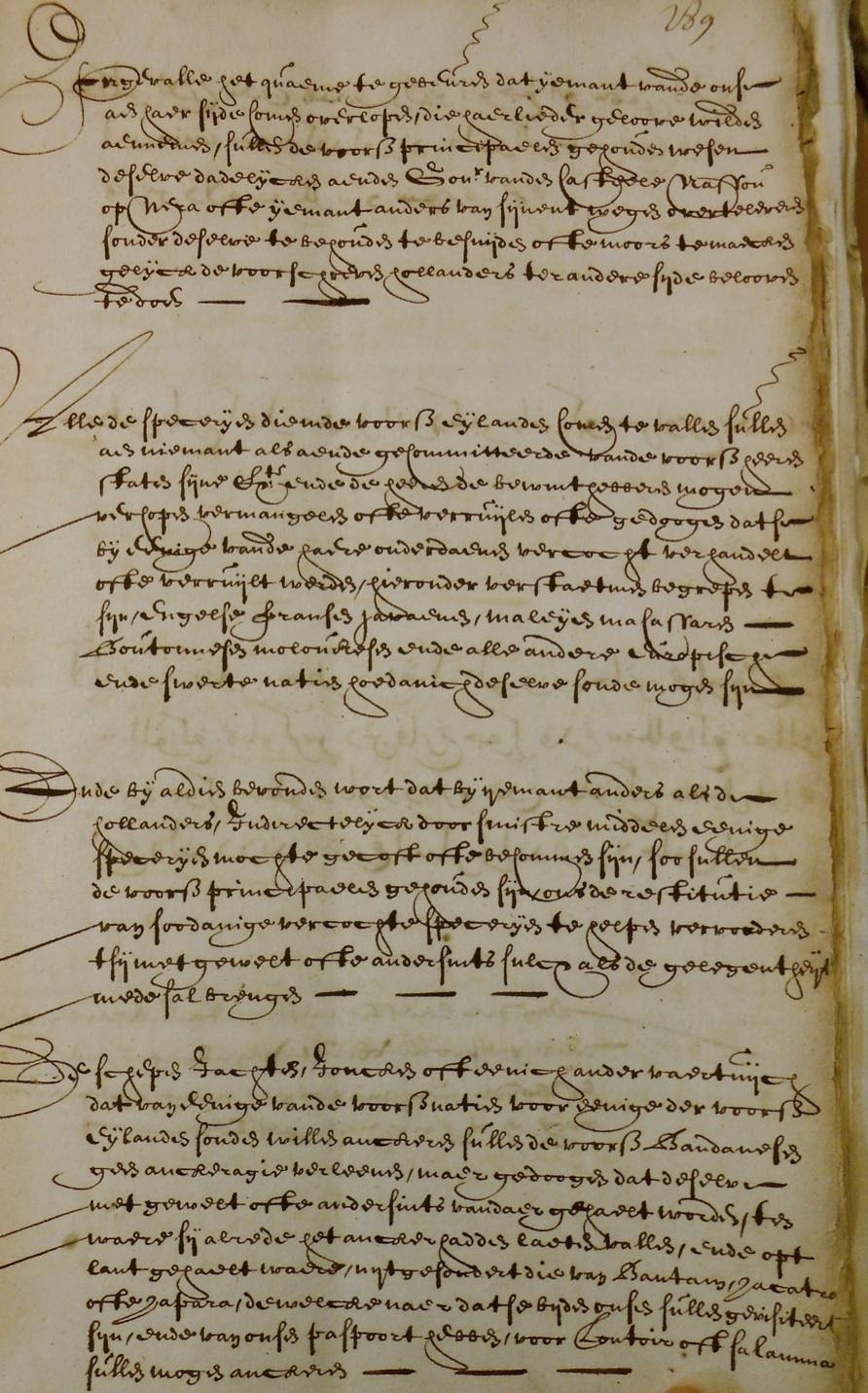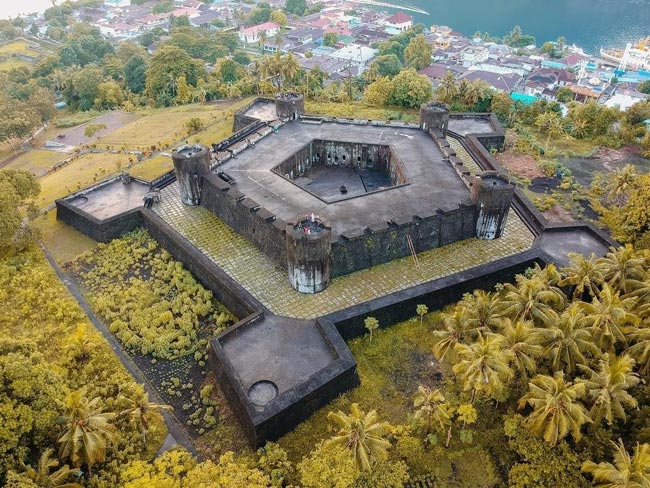
It has been a year since Covid-19 spread across the world, including Indonesia. It drew a public uproar since the first case in this country emerged on March, 2nd 2020. It led people to panic buy masks, hand sanitizer, and disinfectants as self-protection from the virus.
After a while, the professor of Biochemistry and Molecular Biology, Faculty of Veterinary Medicine, Airlangga University (UNAIR) Surabaya, Chaerul Anwar Nidom, drew the public’s attention by his claim that rhizome potion, including ginger, turmeric, curcuma, lemongrass, and other spices that contain curcumin can increase body immunity to prevent the coronavirus. This formulation is what we now call empon-empon.
Although further research was needed, the news went viral on WhatsApp groups and even reached the president. He served empon-empon to the guests who came to the state palace to prevent the coronavirus. As a result, it triggered people to consume rhizomes. Amid the pandemic, once again, spices became a diva.
A year has passed. When the vaccine was discovered, spice-based drinks did not lose their popularity among people to increase immunity. Other than spices, people’s alertness to maintain their immune systems brought benefits to the tea industry. Tea, which is commonly brewed with hot water, can also be combined with certain spices in its process. The ingredients mix is believed to enrich the taste of the tea and add the spices’ benefits.
In “Rempah dan Teh Nusantara” [“Nusantara Spices and Tea”] online discussion, initiated by Directorate of Cultural Development and Utilization, the Ministry of Education and Culture, a tea expert and founder of Indonesia Tea Institute Ratna Soemantri shared a story about the tea culture in Indonesia as well as the benefits of tea and spices amid the Covid-19 pandemic.
“The story behind a cup of tea is vibrant with culture and narrations,” said Ratna, opening the discussion.
The Entry of Tea and the Tea Tradition
The tea culture has become inherent to Indonesians and has become a tradition that has been passed down from generation to generation. Tea is popular among various groups of people regardless of social class, and it is usually served after lunch or to accompany snacks. Tea was present in the aristocratic banquets, as well as a thirst quencher for the proletarians.
Although we’re familiar with tea in our everyday lives, many people still tend to see tea as a mere regular drink which they can freely refill in warung Tegal or angkringan by the roadside. Many have not heard the long stories behind the cups of tea we see today—the stories related to a long history of Indonesia that contributed to cultural crossover in Nusantara.
Historically, tea first entered Nusantara in 1684, brought by Andreas Cleyer, a German botanist. At that time, tea was brought in the form of seeds as mere decorative plants. The historical fact was strengthened by the statement of a pastor named F. Valentijn, saying that he saw tea grown in Governor-General Johannes Camphuys’ courtyard in Batavia.
Tea was not massively planted in acres of plantations and traded like today. Many tea seeds entered and were grown in Indonesia in the 17th century when the Dutch imported them from China, but they were unsuccessful.
After a while, the Chinese tea seeds were successfully planted in Bogor Botanical Gardens in 1826. Tea planting continued on a bigger scale all over the Dutch East Indies areas, especially Java, including Bogor, Garut, Purwakarta, and Banyuwangi. As the number of tea plantations increased, tea processing factories were built. As a result, tea became a profitable commodity at that time. Since then, the indigenous people became familiar with the plant that ceaselessly gained its popularity in everyday life until today.
According to Ratna, lush tea plantations, by dint of the seeds imported from China, led to interactions in the plantation areas. The establishment of the tea industry also created a new culture and contributed to sustaining the tea tradition that was rooted in each area.
There is a well-known tradition from West Java called the Nyaneut tradition. A tradition of drinking the signature tea of Garut, together with family and relatives. It derives from the word nyandeutkeun, meaning ‘to connect’ or ‘get closer. The tradition has long existed among the locals as the meaning of friendship representation, a warm greeting from people who serve the tea to the guests who savor it.
There are rules in the making process of the tea. First, the water is boiled on the clay furnace and charcoal as the fuel. Then, once boiled, the water is moved to the clay teapot to be added with tea. Finally, the tea is served in cups made of bamboo or coconut shell. Since 2014, the tea culture of Garut has become a festival, held periodically to preserve the Nyaneut traditions from generation to generation.
Different from Garut, there is another tradition in Central Java, specifically in Tegal. Located on the border between Central Java and West Java, the tea tradition is called Moci, an acronym of ‘minum teh‘ [‘drinking tea’] and ‘poci‘ [‘teapot’], a tea culture by drinking tea from an earthenware teapot.
For the people of Tegal, drinking tea is more than a habit. It is a tradition in their everyday lives. So, it’s by nature that the tea tradition of the Tegal people led the town to a nickname “Negeri Poci” [“The Land of Teapot”], a title that impressed Indonesian poets with Tegal’s Moci culture. Handrawan Nadesul, Eka Budianta, Acep Zamzam Noor, and other poets recorded the moment in a poetry anthology entitled Dari Negeri Poci in 1993 and still running today.
The tea culture rooted in Indonesia had its glorious era. Ratna stated that Indonesia once was the fourth biggest tea exporter globally, and now this country is in the seventh position in the world.
Amid the Covid-19 pandemic today, the opportunity of the tea industry, along with the spices, opens widely. People believe tea has benefits to increase the immune system. In addition, the polyphenol in tea is believed to reduce the risk of various diseases. “It’s a momentum to promote tea as a good drink, and Indonesia has good quality drinks,” said the Chairman of the Promotion Division of the Indonesia Tea Institute.
The Combination of Spices and Tea
In the middle of the online discussion, the Chairman of Aku Cinta Masakan Indonesia (ACMI), Santhi Sarad, served a tea recipe combined with spices. Some of the ingredients were blue pea flower, mace, lime, and sugar. To make it, brew the blue pea flower and mace in hot water, and let it stand from 3 to 5 minutes. Then, add sugar and the lime juice squeeze to give a taste and change blue pea water from blue to purple. The recipe is called Exotic Blue Pea Flowers with Nutmeg, a drink that functions as an antioxidant (from the blue pea) to improve blood circulation and has a calming effect (from the mace).
According to her, many spices will make a nutritious drink when they are combined with tea. They are ginger, clove, cardamom, lemongrass, red ginger, and many more. The combination of tea and ginger becomes one of the favorites, for it gives a warm sensation in the body and is slightly spicy on the tongue.
Aside from protecting oneself by applying 5M health protocols (memakai masker [wearing a mask], mencuci tangan [washing hands], menjaga jarak [keeping distance], menjauhi kerumunan [avoiding crowds], and membatasi mobilisasi [limiting mobilizations]), doing preventive actions by drinking tea and spices can be a choice to increase the immune system amid the pandemic, for prevention is better than cure. Moreover, for Ratna, it can also revive the prestige of the tea industry.
_________
Source:
Webinar Rempah dan Teh Nusantara dengan narasumber Ratna Somantri, Santhi Serad, and Vita Datau, (YouTube Jalur Rempah RI), accessed on 9 February 2021.
_________
Text: Tiya S.
Editor: Doni Ahmadi
Translator: Dhiani Probhosiwi
Image: KamranAydinov / Freepik









